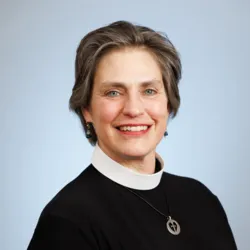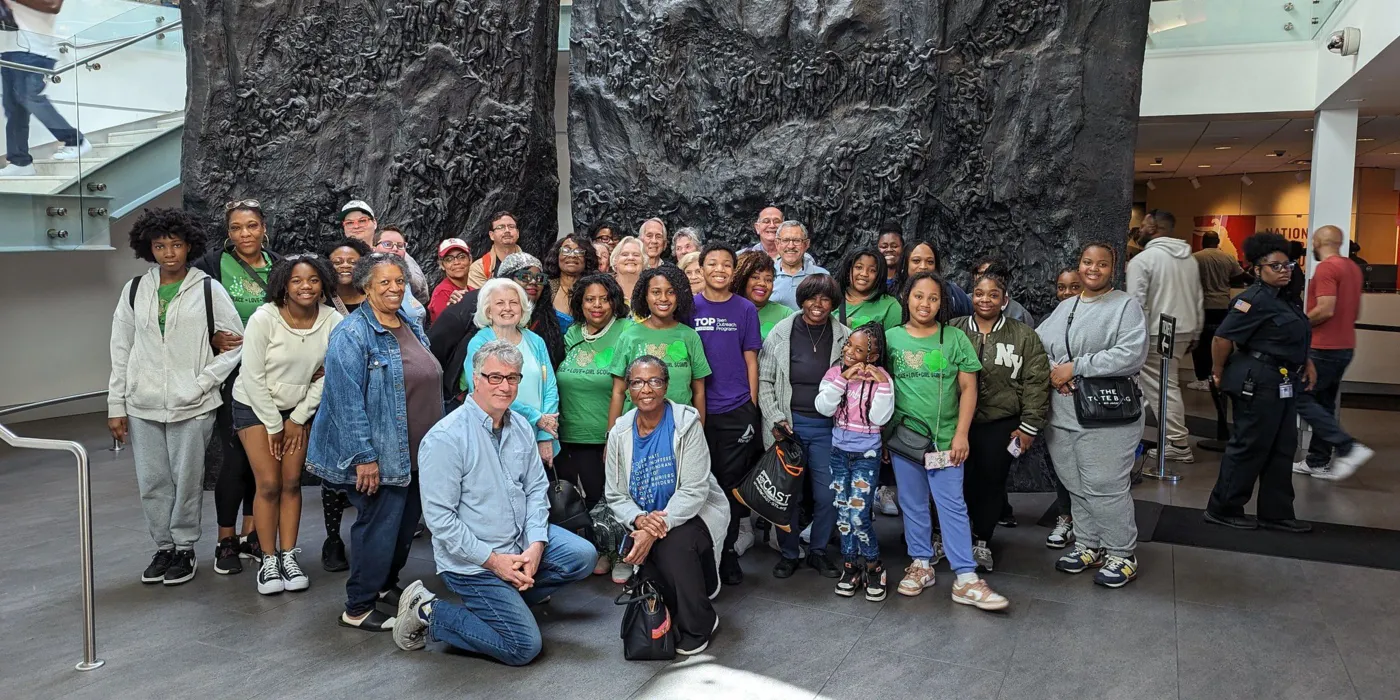
Recently Confluence, a roofless center for spirituality in the Diocese of Missouri, offered a workshop on 3 Women Mystics: Their Lives & Divine Lovestyles, with 25 people from throughout the Diocese attending.
The Rev. Paul A. Metzler, a Confluence Board member, interviewed fellow board member and workshop leader, the Rev. Dr. Emily Hillquist Davis about her interest in mysticism. Besides offering workshops, Emily is the Rector of The Episcopal Church of the Advent and the Vicar of St. Thomas Deaf Church now cohabiting in Crestwood, MO.
Sabine McDowell, also a Confluence Board Member, facilitated the event & taught, too.
PM: How old were you first became aware of mysticism? What was that like?
EHD: I first became AWARE of mysticism when I started grad school at Washington University in St. Louis. My professor of Medieval German much admired mystics and had us reading excerpts of Meister Eckhart and Mechthild of Magdeburg. Though baffled, I knew and felt that what I was reading was deeply true. They caught me from the very beginning and reeled me in over the years. I ended up studying mystics in literature and theology courses. Struggling to understand their witness brought me back to church, and eventually into the priesthood.
However: my first mystical experience I can remember happened when I was five years old and UNaware that it was mystical. I wandered into the living room of an apartment we were staying in just before my dad was transferred from Germany back to the States. Mom was sitting on the couch. I’m not sure why I asked, “What are you doing?” but she replied, “I’m praying.” —“Can I pray, too?”— She sat me in her lap. A couple minutes later I slid off and walked into the stairwell, and was enveloped in wondrous radiance. Wide-eyed, I felt like I was floating. The whole world was new
PM: For someone who never heard of it, how would you describe mysticism?
EHD: Maybe mysticism is coming alive with the love-life of the universe. I’m sure it’s the core religious experience. Symeon the New Theologian (949–1032) put it, “if we genuinely love Him, we wake up inside Christ’s body where all our body … is realized in joy as Him, and He makes us, utterly, real, and everything that is hurt … shameful … ugly … damaged, is in Him transformed and recognized as whole, as lovely, and radiant in His light. He awakens as the Beloved in every last part of our body” (as translated by Stephen Mitchell). Marie Howe (b.1950) writes “I … swam / in what shone at me / only able to endure it by being no one and so / specifically myself I thought I’d die / from being loved like that.”
PM: Did mysticism have a role in discovering you were to become a priest?
EHD: While struggling to write papers and eventually my dissertation on Mechthild of Magdeburg, I would search the BCP to figure out what we believe on various theological issues. Or she’d pose a question she’d written in correspondence with someone long ago like, “Jesus gave you 33 years, can’t you give him an hour a day?” that would set off vehement arguments within me about why I couldn’t do that with a child to raise and classes to attend and teach and papers to write and incompletes to finish and letters owed to friends and family, and, and, and. So stressed and conflicted! So many reasons to ward off God! (The answer’s under the next question.)
PM: Is it true you went to Germany to study and received a Ph.D. specializing in mysticism?
EHD: I innocently put my name next to the word “Trinity” in my first class on Mechthild of Magdeburg’s life work, The Flowing Light of the Godhead, not realizing Trinity can be a logic trap. I gave my class presentation but took an incomplete for the course and applied for a fellowship to study in the Department of Catholic Theology at the University of Tübingen. The Trinity in the work of Mechthild became my qualifying paper for doctoral studies. And Karl Rahner’s trinitarian logic in “Theology of the Symbol” helped me see that all those competing desires and identities that were tearing me up inside when I was trying to ward off God were each fully me and my full self could appear in each relationship, duty, or situation. Finally, the Trinity healed my sense of fragmentation, I could joyfully give my full self into my shifting and various roles.
PM: Who were the three women mystics you choose for the workshop and why?
EHD: I chose Mechthild of Magdeburg because I really know her, and she rather shockingly explores God’s love as erotic desire for relationship with us. God pines for our devotion!
I chose Julian of Norwich because she’s proto-Anglican in using her reason and insight informed by her visions to contradict traditional doctrinal teachings on sin and divine wrath, exploring God’s love as motherly compassion. Plus I wanted to read Mirabai Starr’s newer translation of Julian’s Showings, which offers dumbfoundingly beautiful turns of phrase.
My friend Sabine McDowell had recently fallen in love with St. Thérèse of Lisieux, so I promised to study up, so that we could include “the Little Flower.” I’ll venture to say that Thérèse explores divine love as childlike trust, dependence, and humility.
Furthermore, Sabine wanted to share with the group what so strikes her about Thérèse’s parents. Her account of Zelie and Louis Martin was pretty compelling! Both of Thérèse’s parents had intended to enter cloistered religious life but were turned down. Reluctant to marry, they eventually realized their devotion fashioning their family as loving religious community in which to raise their daughters. That gave me hope for my own parenting. And —saying this now— I realize it resonates a bit with my mother’s role in my first mystical experience.
PM: If I came to this workshop when it’s offered again this fall, what would I experience? Would I go home a mystic?
EHD: Any exploration of mysticism —of various intense expressions of and images for one-ing with God, with Love, with Light, with Compassion, with Delight— might awaken anyone into at least an inkling of their true spiritual home! I can’t believe this workshop would ever be the same twice—even if we presented exactly the same material. This time, I gave a brief biological sketch of each with their core themes. Then I presented unattributed quotes in the words of each mystic. Participants could refer the chart of details about each, make educated guesses, and learn to distinguish the messages and styles of each, seeing their similarities, as well as their differences. Thérèse (due to her extreme youth) tending to make things simple, Julian more philosophical and being shown, instructed and reassured that sin is already its own punishment, and God wishes to embrace, comfort, and welcome you. Mechthild specializing in lyrical, loving dialog.
PM: What is the best advice you can offer to someone just beginning to explore the spirituality of mysticism?
EHD: Get in touch, and we’ll start a 30-minute weekly mystic sharing group. Or get a small used book of great mystical poems like The Enlightened Heart: An Anthology of Sacred Poetry. Or taste and see by looking at online quote collections of mystics whose names you’ve heard ~ not 50 quotes, but smaller collections, because the top picks often offer the clearest insights. Or look up Richard Rohr’s Center for Action and Contemplation for a modern incarnational mystical theology in daily format. Look on your favorite social media or YouTube for Mirabai Starr, Eckhart Tolle, Rumi, Mary Oliver, Joy Harjo, Mark Nepo, Marie Howe, Kabir, Hafiz… The algorithms will send you more similar stuff. Although Mechthild of Magdeburg changed my life, I don’t think I would’ve been able to engage her if I had not been a full-time student with assignments to tackle and hours to devote to the struggle. There are easier ways to start.
*******
3 Women Mystics:
Their Lives & Divine Lovestyles
Exploring Devotional Intimacy with
Thérèse, Julian & Mechthild
Offered by Confluence A Center for Spirituality at
Mercy Conference & Retreat Center
2039 N. Geyer Rd., St. Louis, MO 63131
Saturday, April 27, 2024
9 a.m. - 1 p.m.
$30
These 4-hours offered seekers an introduction to a rainbow of women religious.
Thérèse of Lisieux (“the Little Flower,” France, 1873-1897), Julian of Norwich (England, 1342-c.1416), and Mechthild of Magdeburg (Germany, c.1207-c.1282) share more than one might expect.
